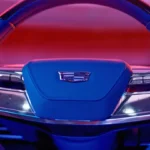1016 Industries, in partnership with Abushi, is 3D printing an extensive custom body kit for the McLaren 720S Spider supercar. The performance-focused kit design company out of Miami is looking to speed up their development times while also reducing tooling costs by incorporating AM into the production process.
Peter Northrop, the founder of 1016 Industries, is using his personal 720S to test out the new fabrication method. Body kits usually go all the way around the bottom of the car, so the required pieces are large and require weeks to make via conventional techniques. A UV resin 3D printer with a massive build volume of 4 x 5 x 6 feet was able to print all of the components as single pieces in just one 140 hour run. “Every part on this project is printed as a single piece proving the capability for full body panels,” said Northrop.
The parts were designed using CFD (computational fluid dynamics) to validate that the geometries produced ideal aero, the results of which can be seen in the video. The “aero” (aerodynamics) of a car has a significant effect on its performance as both drag and downforce are dictated by the shape of a car. Drag is the term for air resistance, and the more drag a car has, the harder it is for it to go fast. Downforce is what happens when a wing is flipped over. It’s the amount of air pressure pushing down on the car, which helps keep the car stuck to the road when cornering at high speeds. Very subtle differences in the shape and size of aero components can have a huge effect on drag and downforce, so much so that wings are adjusted on the fly by only a few millimeters during races to increase performance.
Our focus for this project was exploring how we could employ 3D printing in the automotive world, and the results creating these McLaren 720S parts are impressive. The 3D printing process has not only allowed us to manufacture faster and more efficiently, but we’ve also improved quality. The 3D technology has allowed each 1016 Industries part to be even more accurately made, with each part printed in real scale to validate our CAD and CFD work. Peter Northrop, Founder of 1016 Industries
For this aero kit, many original panels are replaced with 3D printed parts, including the wing, hood, front fenders, outer door blades, lower door skirts, lower rear side skirts, rear quarter panels, bumper extensions, and rear diffuser. That’s a lot of parts to fabricate with molds that also take a lot of time and resources to make. Tooling is an expensive and time-consuming aspect of manufacturing so reducing tooling processes is the primary goal of this printing project for 1016. Northrop explains, “Tooling is a major factor in the speed and cost to market and in the case of this study, if we were to replicate the process we would have saved nearly 10 weeks and 60% of our development budget. This allows us the versatility to reduce internal and customer-based cost.”
But just because they’re looking to cut tooling costs with AM doesn’t mean they don’t see more potential for the technology in their production line. “Secondly, we are using this real-life prototype process to look at ‘can these parts be left as deliverable parts to the client?’ The 720S belongs to me so we are OK to test this for long-term viability,” stated Northrop. “Overall dead cost, if this is viable, is almost a third the cost of direct composite work.”
Featured image & video courtesy of 1016 Industries.










